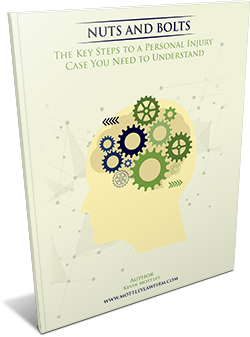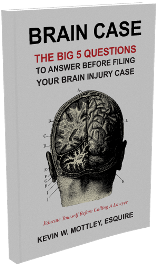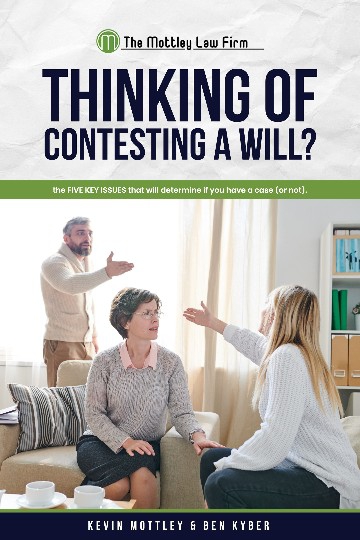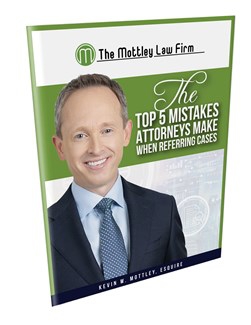A Practical Guide for Striking Biased Jurors for Cause
Learning From Keith Mitnik's "Over the Target" Approach
One of my favorite trial lawyers to follow is Keith Mitnik, a prolific trial lawyer from Florida at the mega personal injury firm, Morgan & Morgan.
I follow a handful of other lawyers in addition to Keith. I pick up tidbits from each of them that work well with my style. But when it comes to conducting voir dire, I give a lot of weight to Keith's methods because they seem so logical and practical to me.
Keith's approach is also "over the target." What do I mean by that? While there are several goals to accomplish in voir dire, to me, the ultimate goal of voir dire should be to identify and remove biased people. Keith's method focuses like a laser on that goal and, for this reason, it's "over the target."
Although identifying and eliminating biased jurors should be the ultimate goal, I feel most trial lawyers have no strategy to do that. Asking jurors if they are "biased" or if they can be "fair" is not much of a strategy.
Keith offers a strategy that not only works but is designed to be done quickly. That is where the practicality of Keith's method comes in. If you've ever done voir dire, you know that the element of time is one of your biggest challenges. Often, judges impose time limits on voir dire. Even without judge imposed time limits a general sense of impatience in the courtroom puts pressure on you to "get to the point."
I encourage you to follow Keith or purchase his book, Don't Eat the Bruises, to learn more about his method. The point of this article is to focus on a key ingredient in Keith's method – to exclude a juror for bias, you must use language in your voir dire questions that is tied to the law in your state for striking a potential juror for cause. You must know what precise language has been considered by your state's supreme court sufficient to mandate the exclusion of a juror by a trial judge.
The Challenge: Finding Effective Language in Virginia Law
When I sat down to do this a few years ago, I became a bit discouraged. It seems that whenever I look for a great case in Virginia, all I find are great cases…from West Virginia!
I started with Virginia Code § 8.01-358, which mandates that a trial judge strike a juror for cause, "if it shall appear to the court that the juror does not stand indifferent to the cause." The same statute provides that, in a civil cause, "counsel for either party shall have the right to examine under oath any person who is called as a juror therein and shall have the right to ask such person or juror directly any relevant question to ascertain whether he is related to either party, or has any interest in the cause, or has expressed or formed any opinion, or is sensible of any bias or prejudice therein." See also Roberts v. CSX Transportation, Inc., 279 Va. 111, 116 (2010).
Unfortunately, the language "indifferent to the cause," "bias," and "prejudice" are not ideal. The first phrase is legalistic and is not how people talk. Would it be effective to ask the panel, "is anyone here not indifferent to this cause?" You would get a bunch of blank stares and confused looks.
It is also unlikely that a potential juror would admit to a bunch of strangers that they are "biased" or "prejudiced," although that is precisely what happened in Burton v. Commonwealth, a case handed down by the Court of Appeals this summer in which a potential juror openly admitted to being "biased" and "prejudiced" against the criminal defendant. See Burton v. Commonwealth, 85 Va. App. 408, 415 (2025). Remarkably, the trial judge allowed the juror on the jury notwithstanding this admission and the defense's objections. The Court of Appeals reversed.
Setting Burton aside for a moment, I have to believe that most people do not like to readily admit such things, especially in a court of law. So, I moved on from § 8.01-358 to the case law in search of better language.
The Breakthrough: "Preconceived Notions and Opinions"
I soon discovered that the Court of Appeals of Virginia has observed that, "it is not uncommon to discover during voir dire that prospective jurors have preconceived notions, opinions, or misconceptions" about legal matters. Lovos-Rivas v. Commonwealth, 58 Va. App. 55, 61 (2011) (emphasis added). I think another word is having "prior feelings" on a subject.
Standing alone, such preconceived feelings, notions and opinions are not sufficient to strike a prospective juror for cause. However, if they are held strongly enough, they can serve as a basis to strike a juror for cause. "[T]he test of impartiality is whether the venireperson can lay aside the preconceived views and render a verdict based solely on the law and evidence presented at trial." Id. (emphasis added); see also Burton, 85 Va. App. at 415 (2025); see also Rodriguez v. Commonwealth, No. 0481-24-1, 2025 Va. App. LEXIS 521 *22-25 (Va. App. 2025).
"Ahah!" I thought. "That is language I can work with."
I think most laypersons would understand what a "preconceived notion" is. They also understand the language "lay aside." But what about deciding a case "based solely on" the law and the evidence, while completely excluding from the decision process preconceived notions and opinions? Is that concept something a lay juror is capable of understanding? I think so, with a little explanation.
Step One: Identifying Preconceived Notions in Your Panel
Which leads to the first couple of steps to an effective and laser focused voir dire: (1) identifying for the panel potential "preconceived notions and opinions" that you are concerned about in your case, and (2) identifying who in your panel may hold such preconceived notions and opinions.
You may wonder how to do that and how likely it is that prospective jurors will raise their hands and volunteer such information. I can assure you they will, especially if you set the issue up gently and benignly.
For starters, as stated above, I prefer not to use the words "bias" or "fair." Rather, I use the words "preconceived notions and opinions" and "feelings", and I gently explain those terms to them using an analogy to a real-life situation.
In my most recent jury trials, I have explained right up front to the venire that "we all have preconceived notions and opinions. That does not make us unfair. That makes us human!"
As you can see, I couch these issues as part of the human condition, not as some affliction. In fact, I suggest that not having preconceived notions and opinions would be out of the ordinary, and weird.
But then I then gently suggest to the venire that, "sometimes, these preconceived notions and opinions can serve as points of friction for us in thinking through a decision." What human doesn't understand that?
Addressing Common Biases Against Personal Injury Cases
I then turned to identifying for the prospective jurors those preconceived notions and opinions I was most concerned about in my client's case. I explained that some people: (1) don't care for personal injury lawsuits or the people who bring them, (2) don't like paying money to someone for "pain and suffering," (3) don't care for large verdicts in personal injury cases, and (4) believe personal injury verdicts are "too big" these days.
I then asked, "do any of you have any feelings, even in the slightest, against personal injury lawsuits?" In two of the three trials, a number of hands shot up. This led me to follow up with everyone who had such preconceived notions and opinions so that I could find out how strongly they held them and how much of a point of friction they were.
I've encountered an objection to this approach only once, in my most recent trial. The defense lawyer insisted that I had to "ask about bias." Of course, that's exactly what I was doing, I just was using different words. I was wrapping the concept in more palatable language – "preconceived notions and opinions" – expressly used by the Court of Appeals in its jurisprudence. The judge gave me leeway but encouraged me to get to the "bias" point.
Step Two: The Visual That Makes "Solely" Clear
The next step in the process is to ask the "for cause" question. Going back to case law, the standard is that the prospective juror must be able to "lay aside the preconceived views and render a verdict based solely on the law and evidence presented at trial."
I think the concept of "solely on the law and evidence" needs some explanation. I do that using a pie chart on a big screen. The pie chart is about 98% green and 2% red. Green is what a decision may be based on (the law and the evidence). Red is what it may not be based on (preconceived notions and opinions). I explain that the word "solely" means 100%. A jury's decision must be based 100% on the law and the evidence.
Step Three: The Strike for Cause Question
After explaining that concept, I next turned to the "strike for cause" question. Using the case law and Mitnik's approach, here is the cause question I came up with:
"Would it be fair to say, in light of your feelings against personal injury suits and the people who bring them, that you cannot honestly assure the court that your decision would be based solely on the evidence and the law; that it may very well be based on the evidence and the law, plus those feelings?"
In one of the three trials, I believe I had at least two individuals say they could not assure the court of that. And those people were excused for cause.
Conclusion: Continuous Learning in Trial Practice
Well, there you have it. This is my current thinking and approach on the "for cause" question in Virginia state court. But, if you're like me, you're always learning. So, I'd be curious to hear your own approach. Please reach out and let me know.





